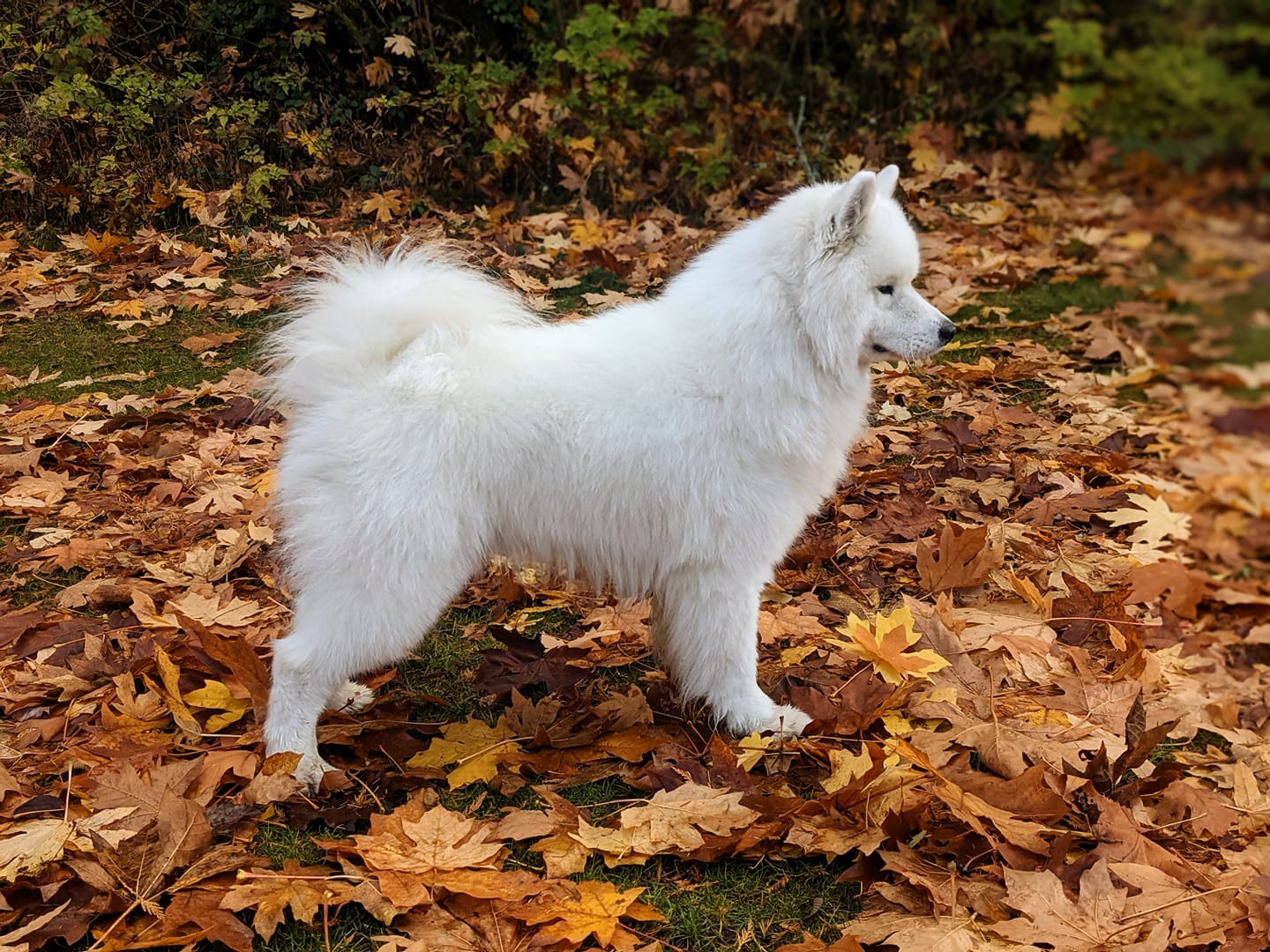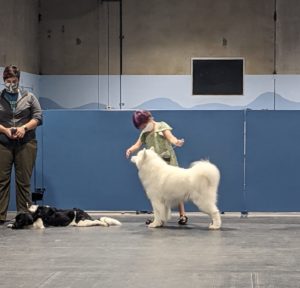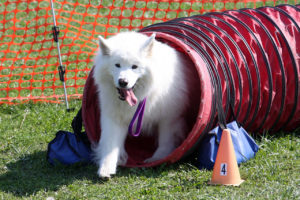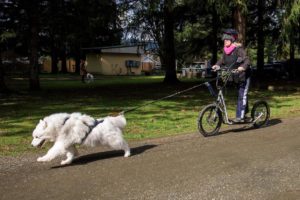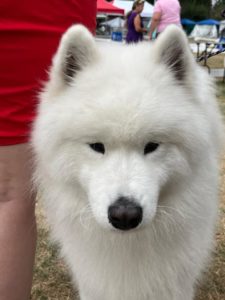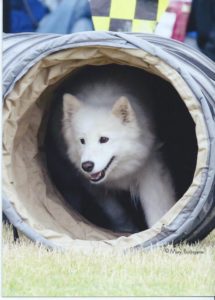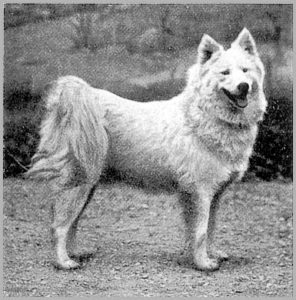The Alpha Factor
The ALPHA FACTOR
Who’s the boss around
here, anyway?
Introduction
Regardless of your reason for acquiring a puppy, you’ll have to win it over. You, not your dog, will have to be the leader of the pack if your pup is to develop into a well-mannered family member instead of a burden. Dominance and alpha behavior are important concepts that every dog owner should comprehend.
Dogs are animals, not human beings. They are pack animals by nature. Every pack has a leader, known as the alpha animal, who dominates and leads the other members of the pack. The alpha is the boss who makes decisions for the entire pack. Usually the pack will have an alpha male and an alpha female. All the other members of the pack form a hierarchy of dominance and submission where everyone has a place.
In your home, you and your family become your dog’s pack, as do any other dogs you may have. It is your responsibility to establish yourself in the alpha position. If you fail to do this, your dog will do it as a natural behavior. Many people assume that they are automatically in charge just because humans are superior to animals. But are you really the pack leader? Does your dog know it?
Being the pack leader does not mean you have to be big and aggressive. Nor does it mean that there has to be a battle of wills after which you are the victor. Anyone can be the pack leader. It is an attitude an air of authority. It is the basis for mutual respect, and provides the building blocks of communication between the two of you.
A pack animal becomes a full fledged member of the group by a process called subordination. With dogs, subordination begins shortly after the third week of life and continues throughout early development. Most normal, healthy puppies are basically pushy animals, and will try to advance as far as possible within the social order of the pack. The key to successfully rearing a puppy is to establish yourself as the pack leader and then maintain that position for the life of your dog.
So how do you become the alpha leader? In the wild, the adults of the pack begin early to teach the cubs the rules. The adults grab pups around the head or neck and gently, but firmly, pin them to the ground. The cubs learn to greet the adults with respect by approaching them using a slightly crouching posture, with ears back, tail down and wagging, and they lick the adults’ muzzles. The cubs do this as a sign of respect and affection, not out of fear. It is called the subordination display, and its function is to keep peace and harmony within the pack.
Alpha exercises
Leadership exercises can confirm humans as the heads of the family pack. Once you establish this relationship, your dog will seek you out. He will want to be with you and will treat you with respect and affection. After he learns to submit to handling, all other tasks such as grooming, nail clipping, cleaning ears, and medicating will be easier to accomplish. But first he must learn that you have the power to handle him, and that handling will not lead to any harm. He must come to trust you entirely.
These exercises will help establish leadership but should not be used with an older pup who has learned to use his teeth to get his way. Exercises one and two are recommended only for small puppies up to three months of age. Exercises three and four are suitable for pups up to six months of age as long as there’s no problem with aggression. Be gentle but firm with all exercises, as you would with a baby human.
- Sit on the floor, then pick your pup up off the floor with both hands supporting him just behind his front legs, facing you. Hold him away from you at arms length. Look directly into his eyes. Growl at him if he struggles, using a low guttural sound. Hold him till he relaxes. Vary the time you hold him in this position from 15 to 45 seconds. Vary the location.
- Sit on the floor and cradle your pup, placing one hand under his head and the other supporting his back so that he is upside down on his back, and up in the air. Hold a larger puppy across your lap. Hold the pup for 15 to 45 seconds, using the same growl as in exercise 1 if he struggles. Hold him until he relaxes.
- If your puppy is large, substitute this exercise for the first two. Straddle your pup, with one of your legs on each side of him. You should be facing the same direction as your dog. Lock your fingers together under his chest, just behind the front legs. Lift his front legs off the ground for 15 to 45 seconds. If he struggles, growl at him till he is quiet.
- Place your dog on the floor with all four legs pointing away from you. Hold him firmly by the neck with one hand, and press down on his midsection with the other hand. Talk to him softly after he is quiet. It might take two or three minutes to get him to relax. If he exposes his belly to be rubbed, you are on the right track. Do not allow him to struggle, get up, or nip. Always praise him lavishly in a quiet tone when he relaxes. Now is also a good time to handle all four paws and look briefly into his mouth so he can get used to tolerating your handling him gently. Be sure to do this exercise four or five times a day at first. Taper off as the pup gets more used to you and accepts your leadership.
The stare
Eye contact is also one of the ways order is kept in a wolf pack. Only an alpha animal may use the stare to remind everyone who is in charge. When you initiate eye contact, you express your alpha position. Encourage your pup to maintain eye contact for several seconds, making it a pleasant experience. Do not force him to do so. Use the term “watch me” and always praise him the instant you have eye contact. However, you do not want to try to do this with a dog who thinks he is already in charge of things. The dog must know you are the leader first. Otherwise you will begin a stare-down contest. An alpha dog will not be willing to be first to avert his eyes. If you are the first to avert or even blink your eyes, it will help confirm the dog’s alpha status.
Alpha discipline: Pack leader activities
There are many pack leader activities you can use as part of a daily training routine. Probably the single most important command your dog can learn is “sit.” You can incorporate “sit” into everyday situations as a reminder that you are in charge of things. Tell your dog to “sit” before you feed him, before you play, before he goes out the door. This shows the dog that he must respond to you before indulging in his own pleasures. If he is obedience trained, put him in a down-stay while you prepare his dinner.
Your dog will accept you as pack leader as long as you are consistent and fair in your demands. You must never permit him to growl or snap. If he does, a severe scruff shake is necessary, followed by no attention from you for 10 to 15 minutes. The scruff is the loose skin around the dog’s neck. If your pet growls or snaps and you are not afraid to handle him, grab him firmly by the scruff with both hands, stare him in the eyes, and shake him. Then put him in his crate for 15-20 minutes and ignore him.
If your dog growls or snaps and you are afraid to discipline him, seek professional help. Don’t ignore the incident; a dog allowed to threaten his family can easily become a biter.
Never overlook any challenge to your authority. Most dogs will test their owners, usually in adolescence. When the issue is settled immediately, it usually ends the matter.
There are several books that will help owners establish leadership to assure a long, healthy relationship with a pet. There are also several training clubs and businesses in the area for those who prefer an instructor’s assistance and for those who need help with problem dogs.
Books:
- Positively Obedient, by Barbara Handler. Alpine Publications, 1987. ISBN 0-931866286.
- SuperPuppy , by Peter J. Vollmer. SuperPuppy Press, 1992. ISBN 1-886056-01-3.
- SuperDog, by Michael W. Fox. Howell Book House, 866 3rd Ave., New York NY 10022. 1990. ISBN 0876057415.
- The Chosen Puppy, by Carol Lea Benjamin. Howell Book House, 866 3rd Ave., New York NY 10022. 1990. ISBN 087064173.
- Second Hand Dog, by Carol Lea Benjamin. Howell Book House, 866 3rd Ave., New York NY 10022. 1988. ISBN 0876057350.
- What All Good Dogs Should Know, by Jack Volhard & Melissa Bartlett. Howell Book House, 866 3rd Ave., New York NY 10022. 1991. ISBN 0876058322.
- How To Raise A Puppy You Can Live With, by C. Rutherford & D. Neil. Alpine Books, Loveland CO 80537. 1992. ISBN 093186657X.
- The Art of Raising a Puppy, by The Monks of New Skete. Little, Brown & Co, Canada. 1991. ISBN 0316578398.
Barbara Jansen
Copyright 2001 by Canis Major Publications. All rights reserved.


